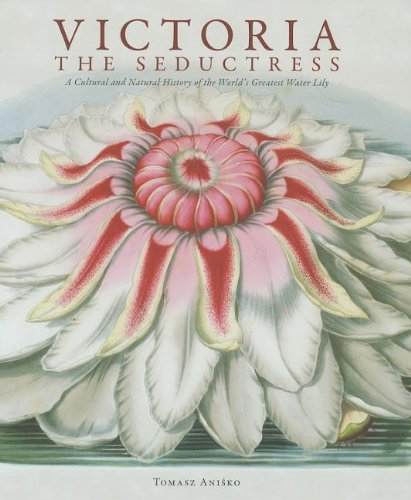
Want a really cool plant that will be the envy of all your fellow gardeners? Try Victoria amazonica. All you need is a deep pond, the water maintained at 80-85° year-round. A heated greenhouse is essential through the winter, and, for best display, the pond should be at least 20 feet wide. Easy.
If this strains your gardening budget and ambition, consider a visit this fall or winter to the Miller Library to read Victoria the Seductress: A Cultural and Natural History of the World’s Greatest Water Lily. Written by Tomasz Aniśko, curator of plants at Longwood Gardens, this ambitious work is really several books in one.
It begins as jungle thriller, following the exploits and mishaps of several ninetleenth century plant explorers in South America, each discovering V. amazonica independently, typically under dire circumstances. It continues as a botanical and political drama—this was a time when governments and storied scientific institutions were passionate to have their chosen name assigned to high profile new plants. “Pens were drawn and ink was shed in the next battle of the great paper-war.”
Next is the race to be the first to have it grow and bloom in cultivation. The winner, Joseph Paxton, was knighted for his success. Why don’t we have reality television shows like this?
While the frenzy has died down over the last 150 years, this is still a big-ticket plant. There’s almost a cottage industry of posing little children on the leaves. Growers compete to have the world’s biggest leaves (who needs pumpkins?), with the current record at just over nine feet. The round leaves with their turned up edges have become iconic—did you catch their cameo in The Wizard of Oz?
A plant this good deserves an award-winning book, and Victoria the Seductress won the prestigious Award of Excellence in Horticulture from The Council on Botanical and Horticultural Libraries in 2014. Reading it, or just beholding the wealth of photographs, will make you look forward to visiting one of the public gardens where “she” resides, waiting to snare you with her magic.
Published in Garden Notes: Northwest Horticultural Society, Fall 2014